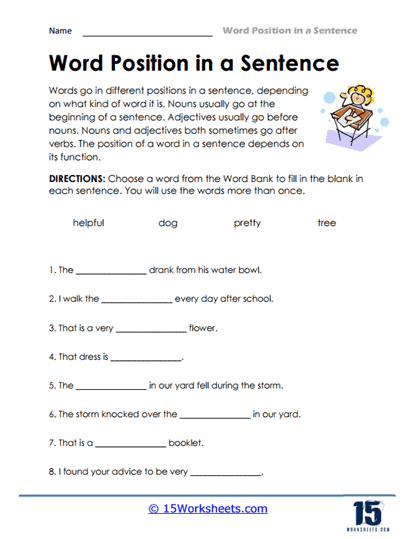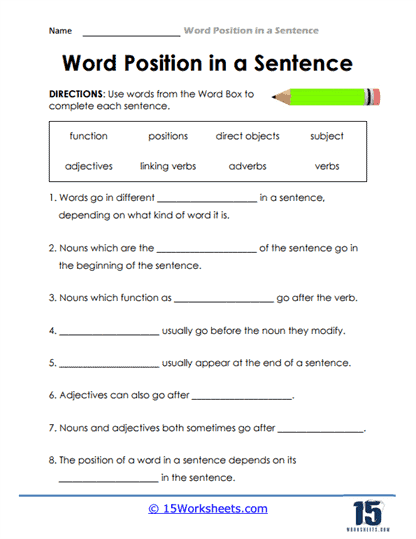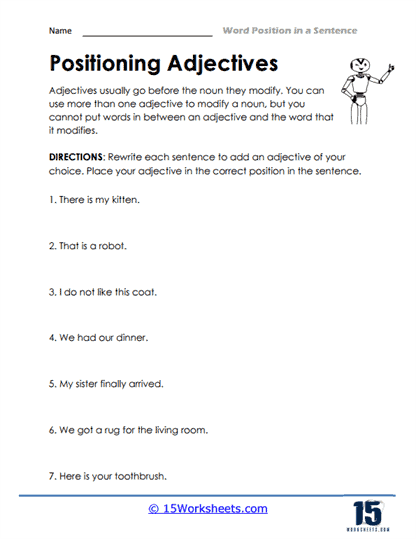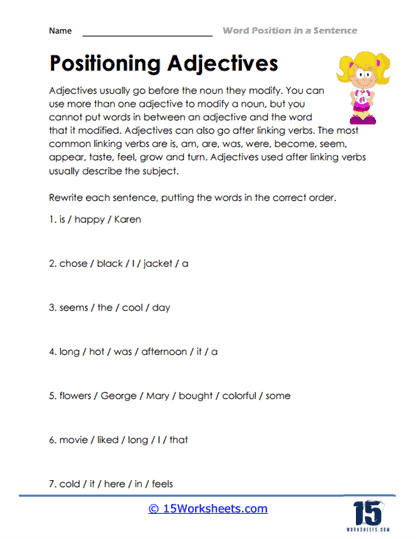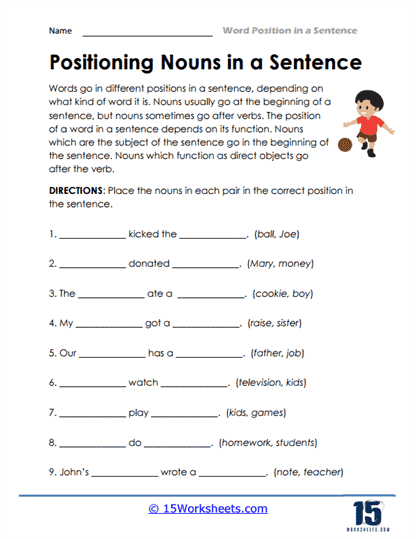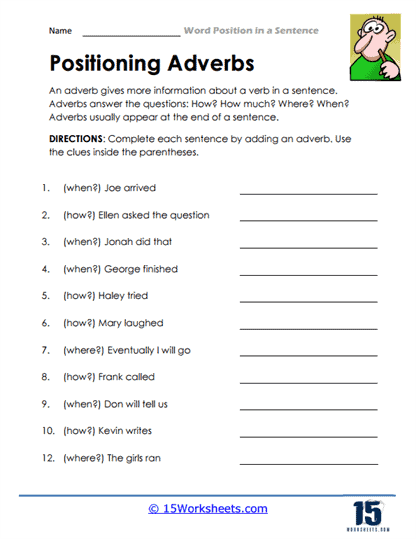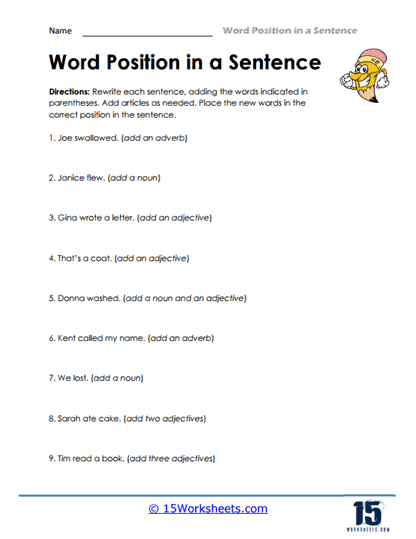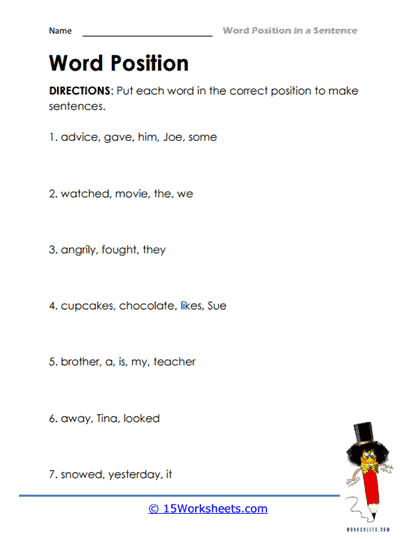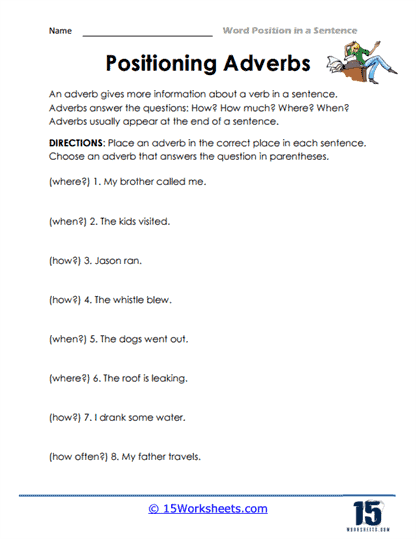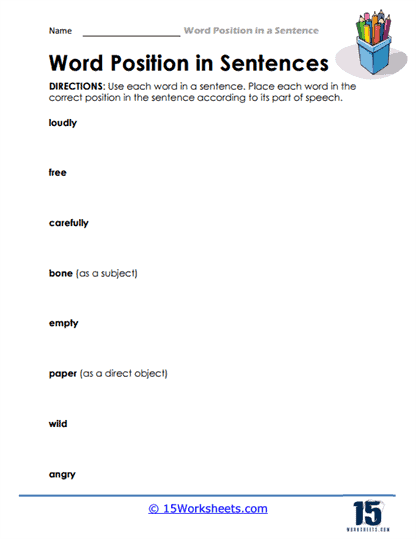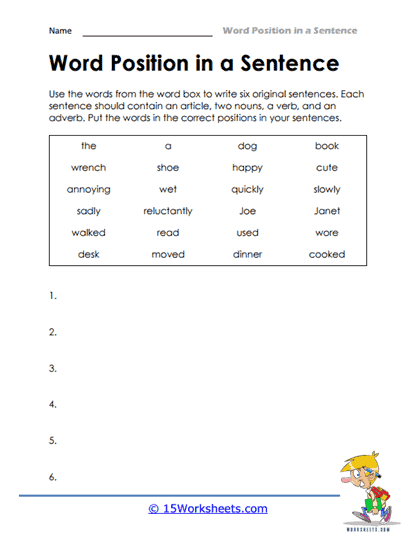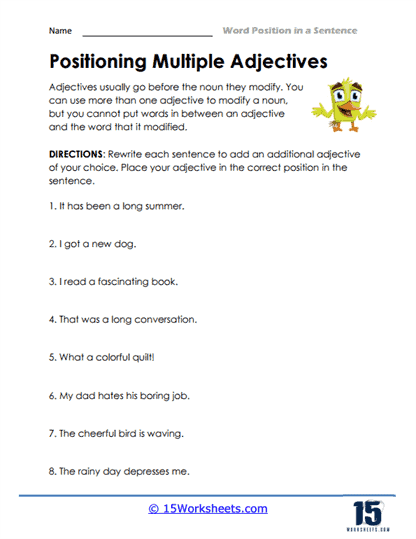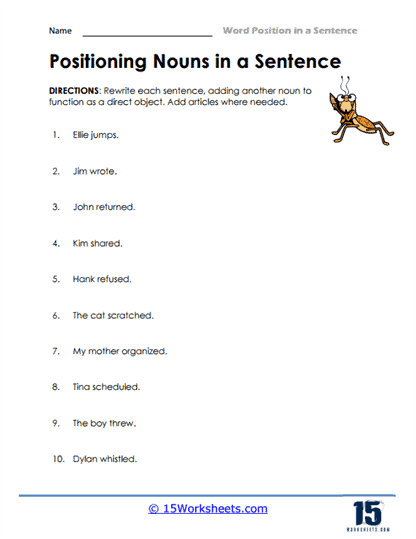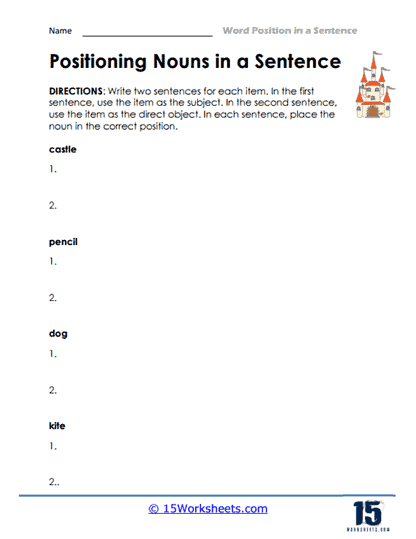Word Position in a Sentence Worksheets
All About These 15 Worksheets
Word position in a sentence is crucial for several reasons, including conveying meaning, ensuring grammatical correctness, and maintaining clarity and coherence in communication. Here are some reasons why word position matters:
Conveying Meaning – In many languages, including English, word order helps determine the meaning of a sentence. Changing the position of words can alter the meaning or create ambiguity. For example, “The dog chased the cat” and “The cat chased the dog” have different meanings due to the change in word position.
Grammatical Correctness – Proper word order is essential for adhering to the grammatical rules of a language. In English, the standard word order is subject-verb-object (SVO), and deviations from this pattern can lead to grammatically incorrect sentences or confusion.
Maintaining Clarity – Word position impacts the clarity of a sentence. Incorrect or unconventional word order can make it difficult for readers or listeners to understand the intended meaning or follow the flow of ideas.
Emphasizing Key Points – In some cases, word position can be used to emphasize a particular element in a sentence. For example, placing an adjective before a noun (“the enormous elephant”) emphasizes the size of the elephant, while placing it after the noun with a verb in between (“the elephant was enormous”) emphasizes the adjective.
Creating Coherence – Word order contributes to the coherence of a text by ensuring that sentences and ideas are connected logically and follow a clear pattern. Consistent word order helps readers process information more easily and aids in comprehension.
Indicating Relationships – Word position can signal the relationship between different elements in a sentence, such as the subject and its predicate or the object of a verb. Proper word order helps readers and listeners understand these relationships and interpret the sentence correctly.
In summary, word position in a sentence is essential for conveying meaning, ensuring grammatical correctness, and maintaining clarity and coherence in communication. A proper understanding of word order in a language is necessary for effective written and spoken communication.

